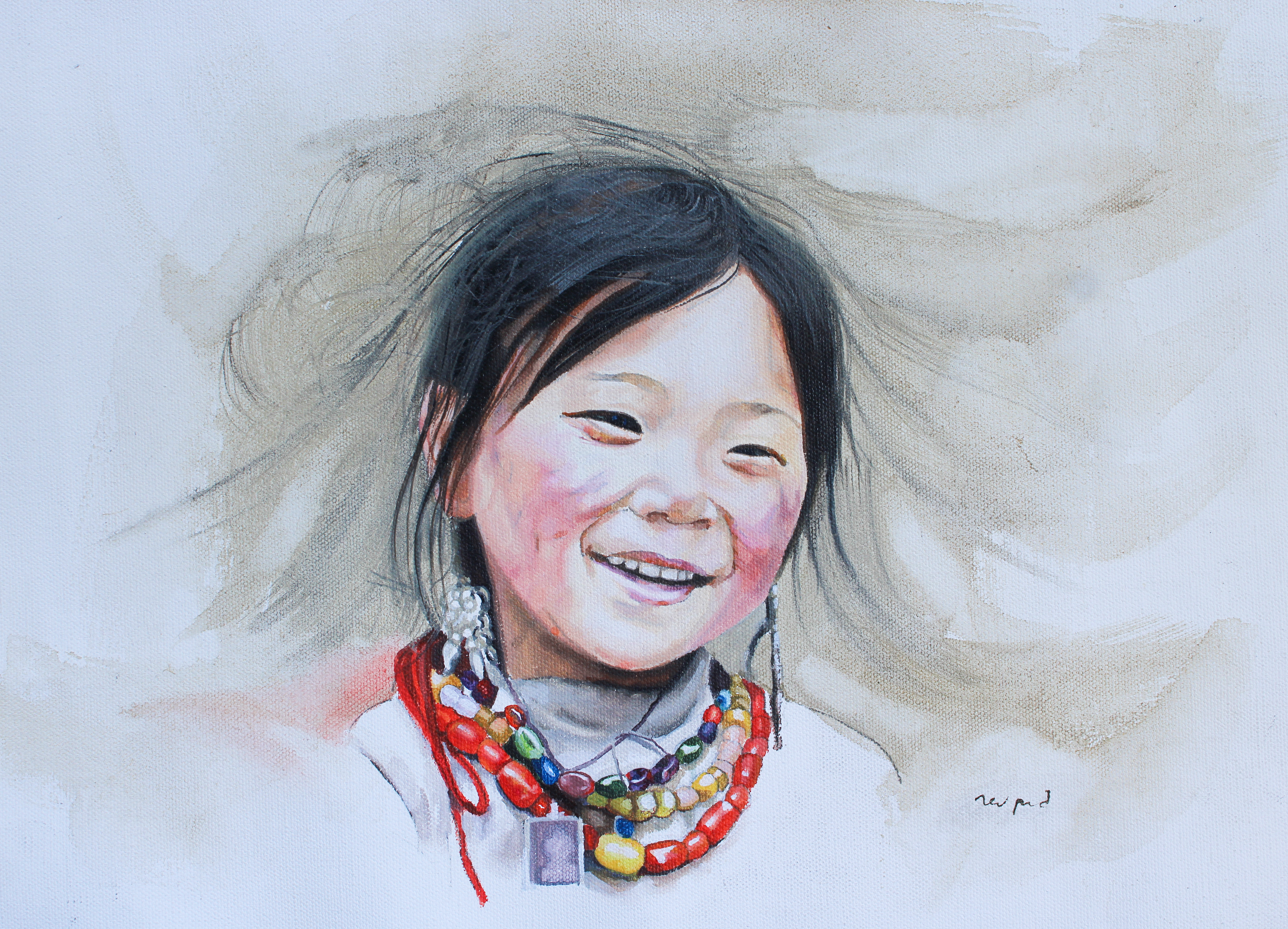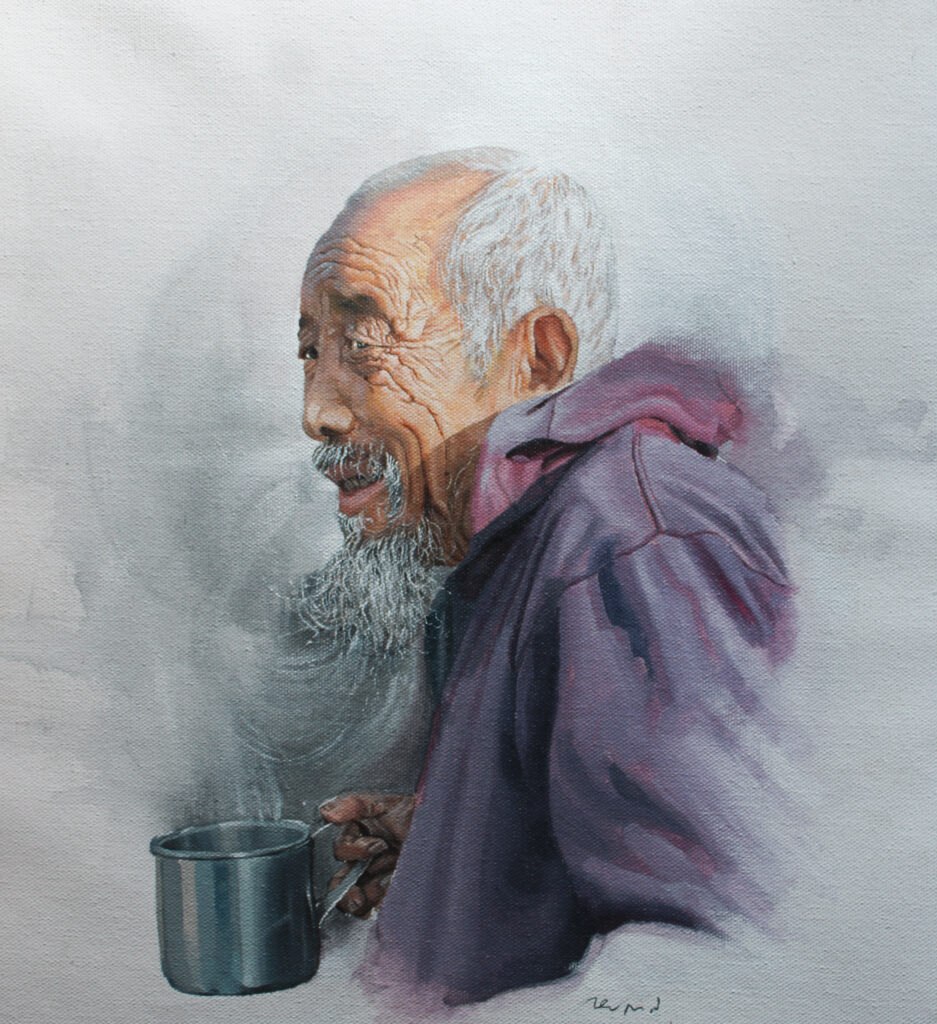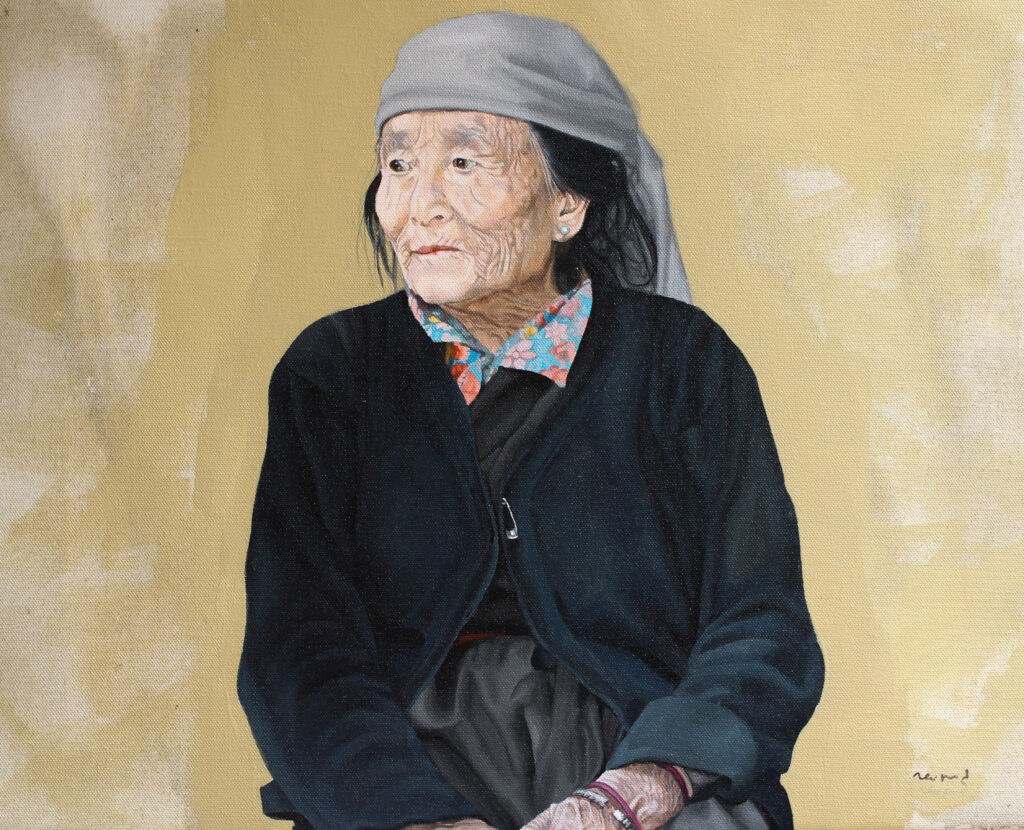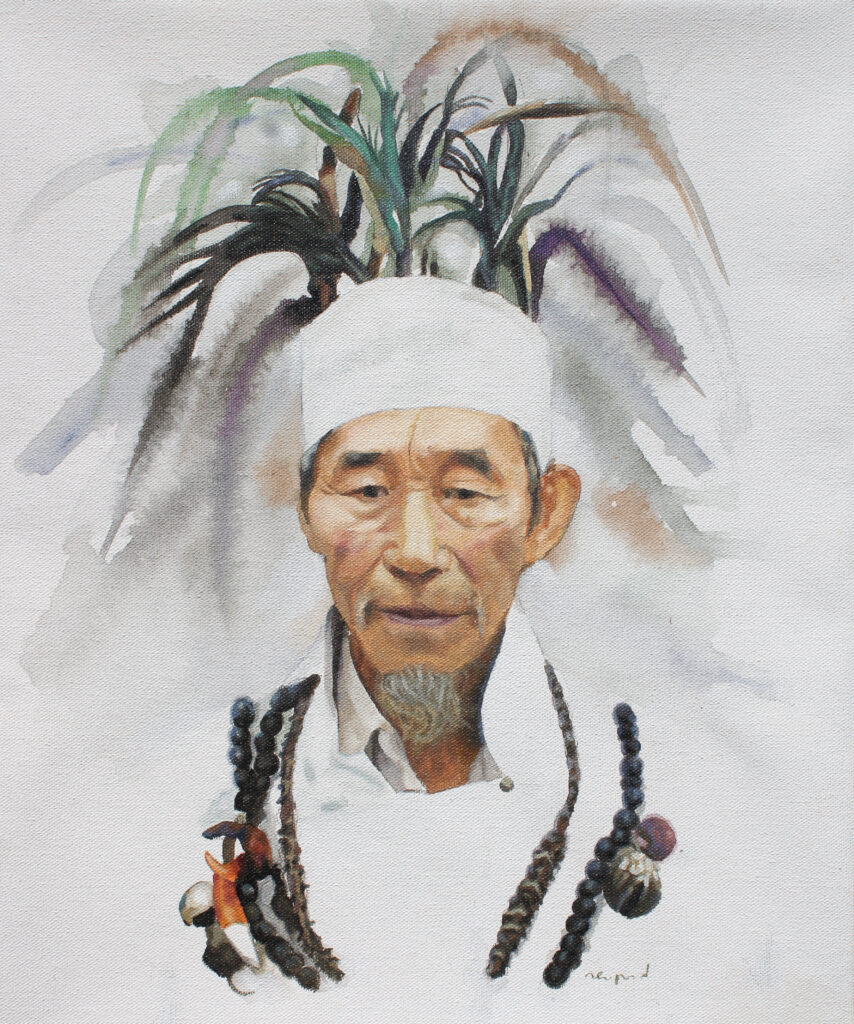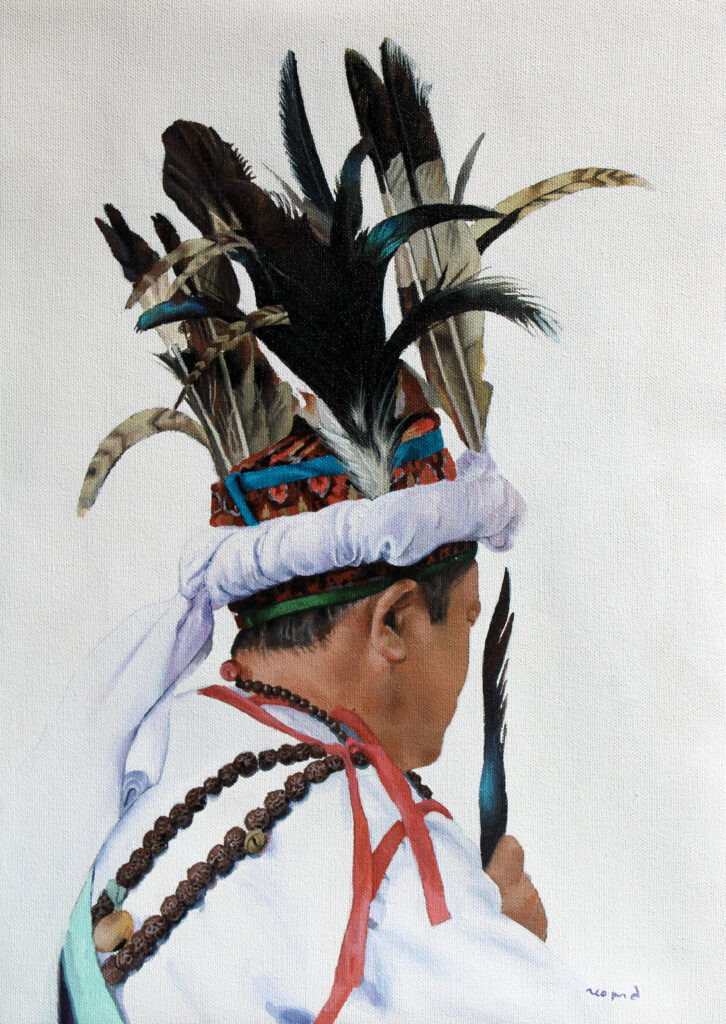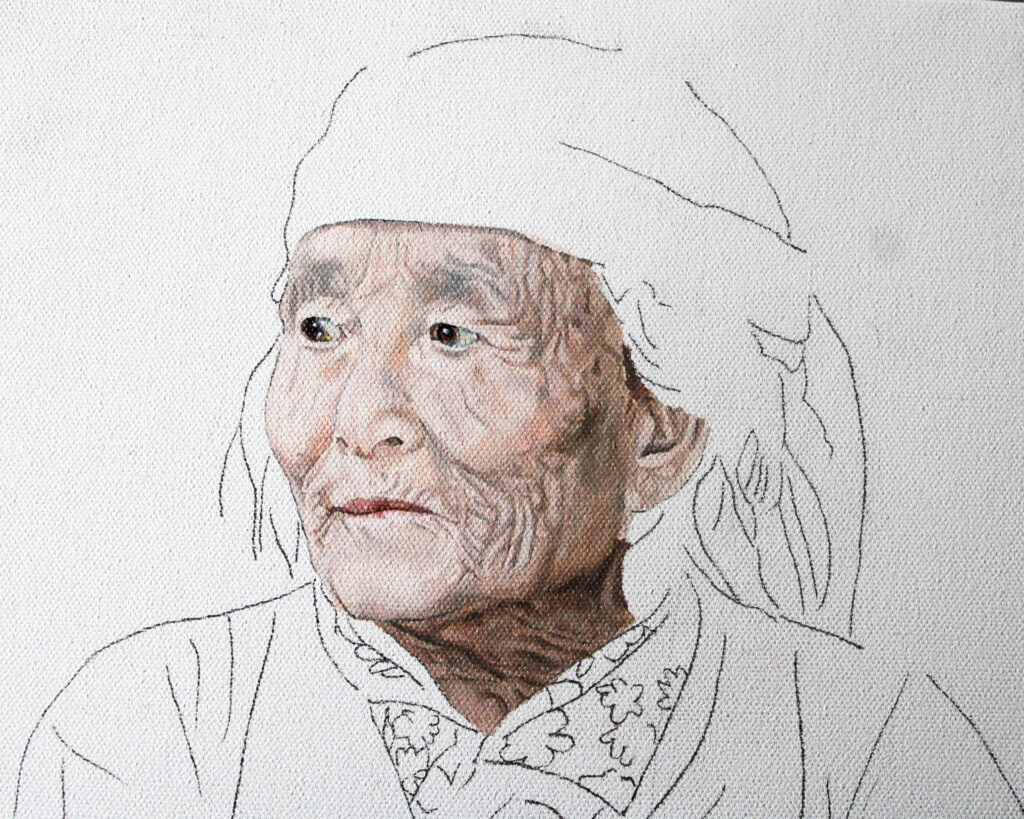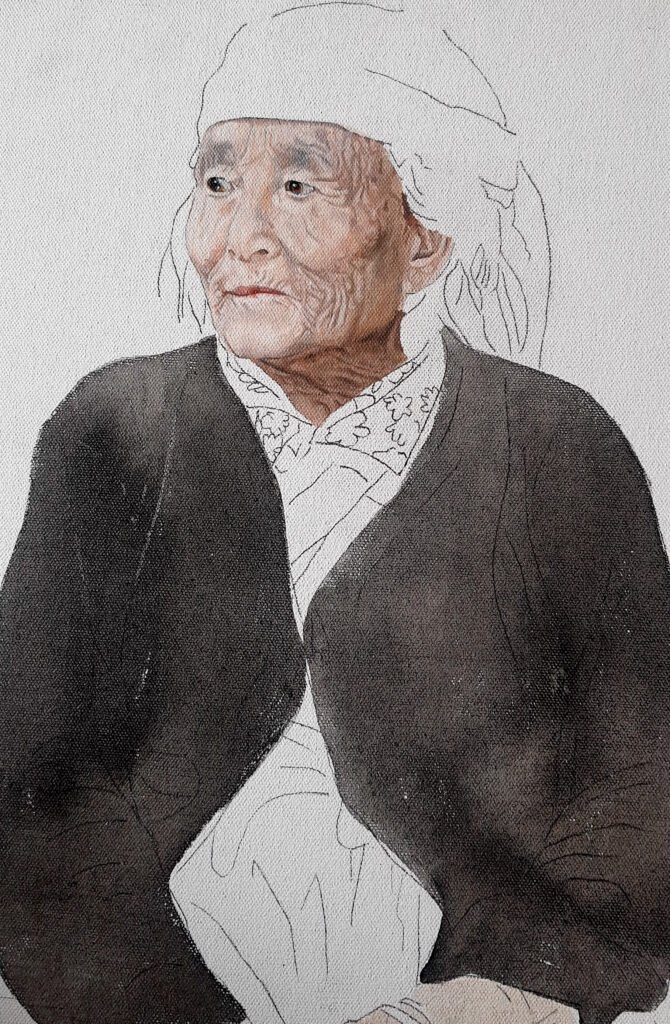Exploring the Ethnic Communities of Sikkim – Deo Prasad Rai | Sikkim, India
We are excited to feature a project that EAS helped to support with Sikkim artist, Deo Prasad Rai. His realistic portraits investigate classical techniques, as well as Sikkimese ethnic communities--Lepcha, Bhutia, and Nepali. This extraordinary project is a cultural study. Deo presents here his academic research along with his distinctly detailed paintings of Sikkimese people, in an attempt to better understand and portray each community’s dynamic values and beliefs.
Sikkim and its Ethnic Communities
Sikkim, a state in Northeast India, has many different communities, cultures, religions and customs. Sikkim is a good example of India's unity in diversity with a good mechanism to live in harmony among the people of the states. The people of Sikkim are warm, simple, friendly and happy with nature. They are commonly known as Sikkimese.
The people of Sikkim consist of three ethnic groups, namely Lepcha, Bhutia and Nepali communities with different shades that intermingle freely in Sikkim to form a homogeneous mixture of Sikkimese culture, encompassing many customs and ways of life while managing to maintain their own identity. The Sikkimese people can be seen in various places of worship, festivals and cultural dances that are celebrated throughout the year.
Click each image to enlarge.
Bhutia Community
The Bhutias are a Lamaist people, who practice Buddhism and whose lingua franca is Dzongkha, Tibetan. In North Sikkim they are called Lachenpa and Lachungpa. A Bhutia house called "Khim" is usually rectangular in shape. The Bhutias constitute about 16 percent of the total population of Sikkim and consider the priesthood an academic and spiritual option. They are followers of Vajrayana Buddhism.
In the Bhutia family, marriage is arranged through negotiation. Traditional Bhutia society was feudal, with the majority of the population working as tenants of nobles. Bhutia has a rich tradition of dances, songs and folk tales. The traditional dress of the male member is known as "Bakhu" which is a loose cape-type garment with full sleeves. The women's dress consists of a silk "Honju" which is a full-sleeved blouse and a loose suit-type garment. Women like heavy jewelry made of pure gold and pearls.
Lepcha Community
The Lepchas are said to have been the original inhabitants of Sikkim, making up 10-14% of the population of Sikkim. The Lepchas are concentrated in central Sikkim. This area covers the confluence of the Lachen and Lachung rivers and the Dickchu.
They worship the spirits of mountains, rivers and forests. Lepcha (from Zongu) folklore is full of stories that convey their beliefs. The Lepchas were originally nature worshipers and believed in witchcraft and spirits. Today they mainly embrace Buddhism or Christianity.
The Lepchas have a very simple lifestyle and are very intelligent and hospitable by nature. They are peace-loving people who avoid quarrels. They love sports and are very good at archery. They live mainly on trade and cultivate paddy, cardamom and oranges. In addition to growing agricultural and horticultural crops, the Lepchas raise a large number of cattle and dairy cows.
Nepalese Community
The people living in the Himalayan region of Sikkim with Lingua Franca 'Nepali' are the aborigines of Sikkim. The largest community of Sikkim, they constitute 70% of its population. The Nepali community consists of various subcultural strains with significant differences in physical characteristics and customs. Each tribe is divided into several classes. The most important of these tribes are: Rai, Limbu, Gurung, Magar, Tamang, Newar, Chettri, Bahun, etc.
Nepalese are spread east, south and west of Sikkim. They are mostly Hindus but some are Buddhists. They adopted terrace farming which was started in the state. They have row fields to plant more crops that grow abundantly and are their staple food. Traditional healers like jhakri, Phedengba (Limbu priest), Mangpaa (Rai priest) practice their healing techniques and rituals to cure the general disease of the society.
Traditional Nepali men's dress consists of a long double piece of cloth that reaches below the waist and trousers known as "Daura Suruwal". The traditional women's dress consists of a double piece of cloth known as "Chow Bandi Choli". The scarf they wear is known as a "Majetro". Men prefer the traditional "Khukri" weapon which is a heavy weapon carried in a wooden or leather sheath known as "Daab".
In Process
References:
1. Government of Sikkim India website
2. Sikkim: Land of the Enchanting Tranquility - Assam Don Bosco University website
3. The Lepchas of Sikkim by Geoffrey Gorer
About the Artist

Deo Prasad Rai is a realistic fine artist. He is 26 years old and grew up in a rural region of Geyzing, West Sikkim in India where he currently resides and continues to learn from nature, everyday landscapes, and people. He graduated from Sikkim Government College, Gyalshing, and is pursuing his interest in painting landscapes and figurative portraits. He describes his paintings as “a never-ending investigation of the techniques and traditions of past masters.” As a recipient of the COPD Art Contest 2020 by the European Lung Foundation, Deo has become the first Sikkimese artist to win an international art competition.

